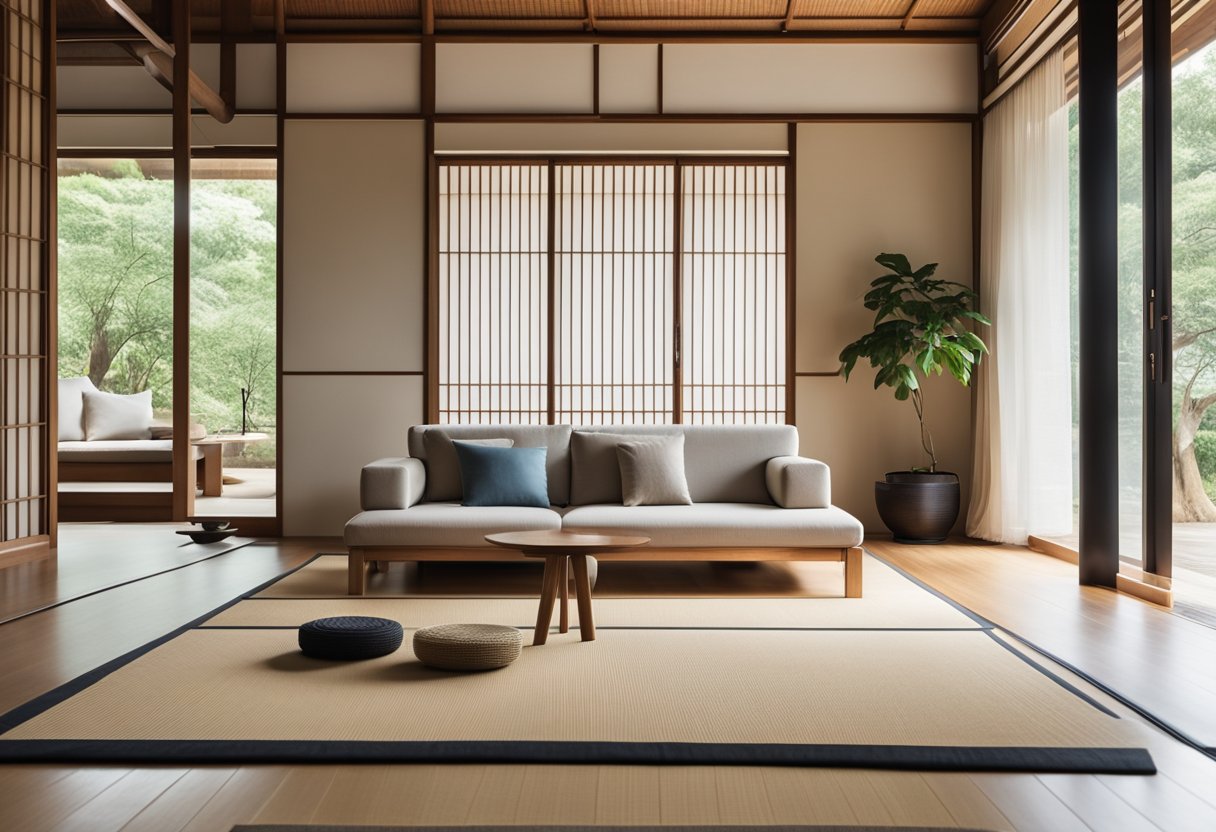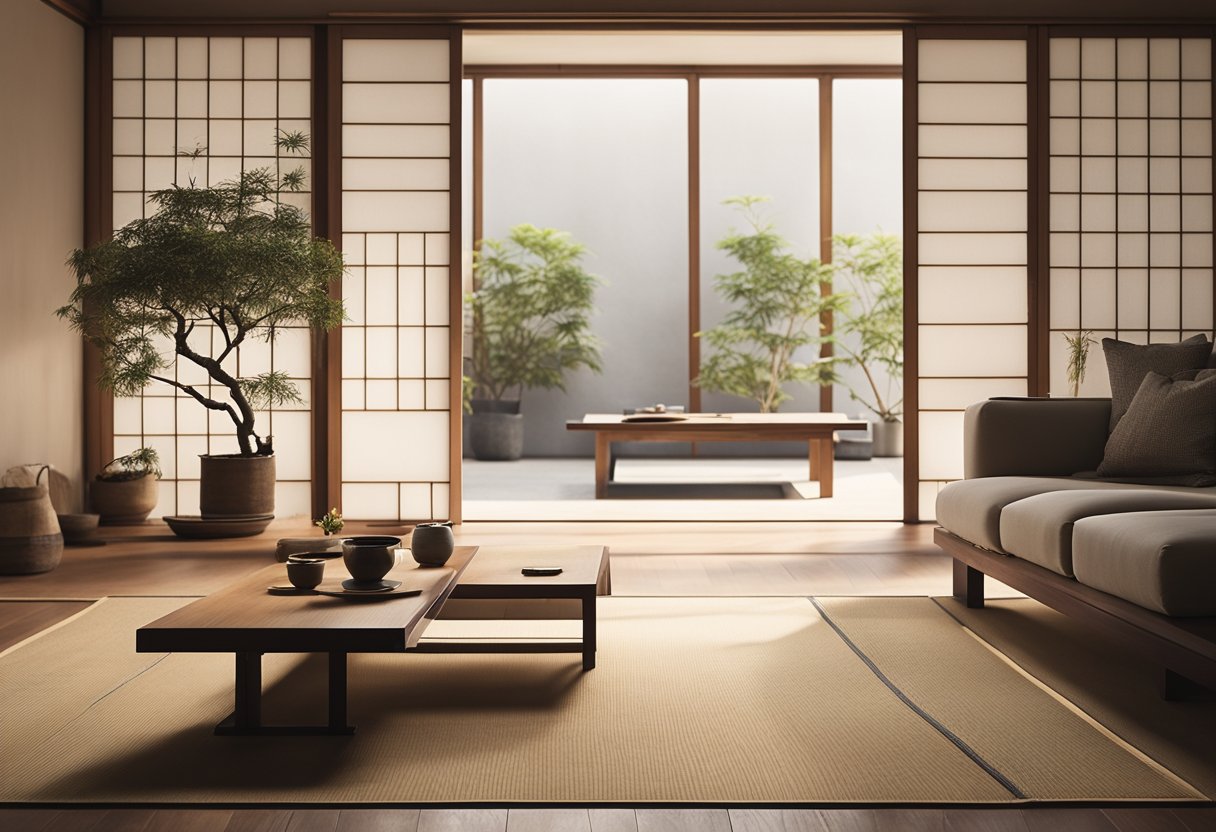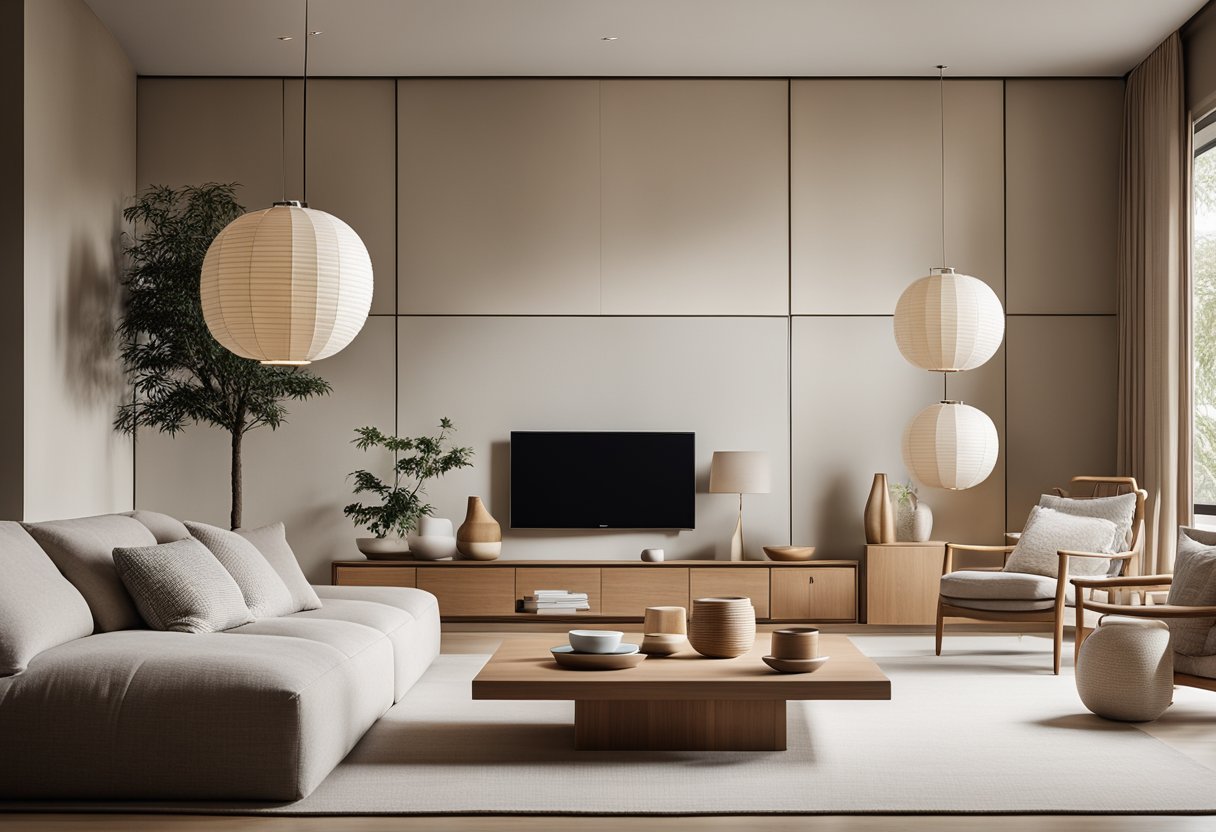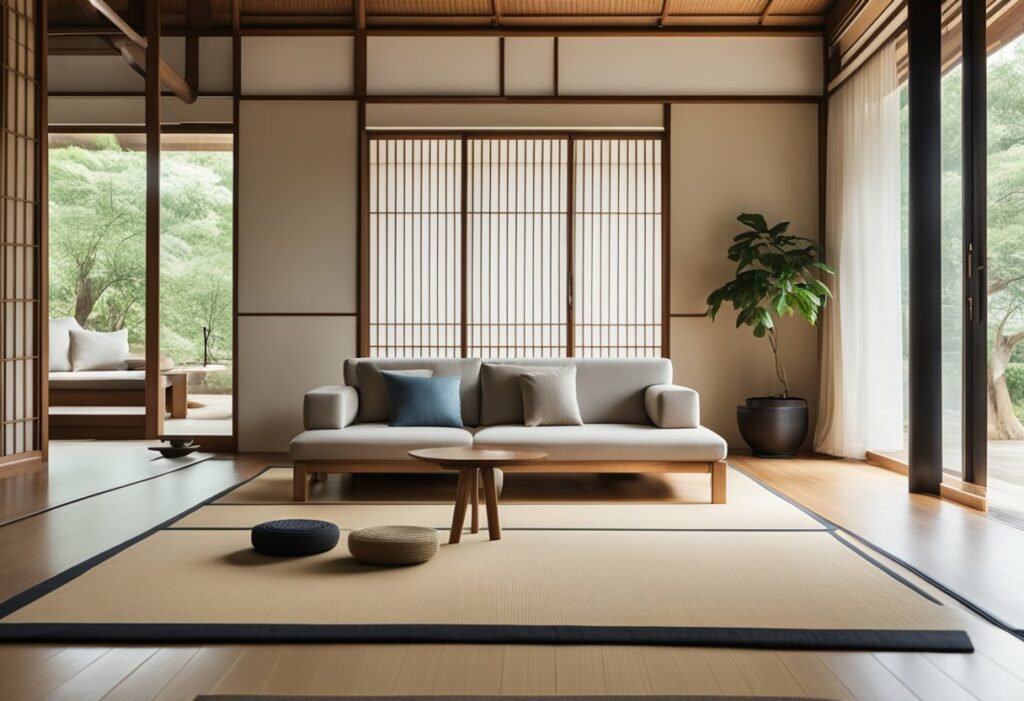Modern Japanese Interior Design for Your Living Room
If you’re looking to create a stylish and calming living room, modern Japanese interior design might be just what you need. This aesthetic is based on the principles of simplicity, natural materials, and a focus on creating a peaceful atmosphere. By incorporating these elements into your living room, you can create a space that is both beautiful and functional.

Foundations of Modern Japanese Living Room Design One of the key elements of modern Japanese interior design is simplicity. This means that the living room should be free of clutter and unnecessary objects. Instead, focus on creating a few statement pieces that are both beautiful and functional. Natural materials such as wood, bamboo, and paper are also important in this aesthetic. These materials create a sense of warmth and texture that is essential for a peaceful living room.
Fusion and Furniture: Japandi Style in the Living Room Japandi is a fusion of Japanese and Scandinavian design that has become increasingly popular in recent years. This style combines the simplicity and natural materials of Japanese design with the clean lines and functionalism of Scandinavian design. In the living room, this means incorporating furniture that is both stylish and practical. Look for pieces that are made from natural materials such as wood or bamboo, and that have clean lines and simple shapes.
Key Takeaways
- Modern Japanese interior design is based on simplicity, natural materials, and creating a peaceful atmosphere.
- Japandi style combines Japanese and Scandinavian design to create a fusion of simplicity and functionality.
- To create a modern Japanese living room, focus on simplicity, natural materials, and incorporating statement pieces that are both beautiful and functional.
Foundations of Modern Japanese Living Room Design

If you’re looking to create a calming and tranquil living space, then modern Japanese interior design is an excellent choice. The style is characterised by simplicity, natural materials, and a minimalist aesthetic that promotes peace and tranquility. In this section, we will explore the fundamental concepts of modern Japanese living room design.
Influence of Japanese Minimalism
One of the key features of modern Japanese interior design is minimalism. This design philosophy is all about stripping away unnecessary clutter and creating uncluttered spaces that promote tranquility and mindfulness. Minimalism is also about functionality and making sure that every item in the living space has a specific purpose.
Natural Materials and Neutral Tones
Another defining characteristic of modern Japanese living room design is the use of natural materials and a neutral colour palette. This includes wood, tatami mats, and earthy tones such as beige and cream. The use of natural materials helps to create a connection to the natural world and promotes sustainability.
Incorporating Natural Light and Greenery
In modern Japanese living room design, natural light is an essential element. Large windows and sliding doors are often used to create a connection between the interior and exterior spaces. Soft lighting is also used to create a warm and inviting atmosphere. Greenery is another important feature of modern Japanese living room design. Indoor plants, bonsai trees, and other natural elements help to create a sense of harmony and balance.
In summary, modern Japanese living room design is all about creating a space that promotes peace, tranquility, and a connection to nature. By using natural materials, neutral colours, and incorporating natural light and greenery, you can create a cozy and inviting living space that promotes mindfulness and serenity.
Fusion and Furniture: Japandi Style in the Living Room

Japandi style is a fusion of Japanese and Scandinavian design, which combines the functional and practical elements of Scandinavian design with the minimalist and elegant aesthetics of Japanese design. This style creates a serene and inviting living space that is both visually appealing and highly functional.
Japandi Aesthetics and Practicality
Japandi style is characterized by its timeless elegance, minimalist style, and functional furniture. The use of natural materials such as bamboo, stone, and rattan, along with a neutral colour palette of grey, linen, and cotton, creates a calming and inviting atmosphere in the living room.
To add a touch of Japanese elegance, consider adding vases and ceramics in muted colours, and using shoji screens to divide the living space. Washi paper can also be used to create a unique and beautiful accent wall.
Selecting Furnishings for Style and Comfort
When selecting furniture for your Japandi living room, consider the principles of both Japanese and Scandinavian design. Choose minimalist and clean-lined pieces that are made of natural materials such as wood, and have a neutral colour palette. This will create a harmonious balance in the living space.
Consider using chairs and sofas with simple and clean lines, and add comfort with soft cushions and throws. A coffee table made of natural wood or stone can be a great addition to the living room, along with a simple bookshelf to display your favourite books.
A great example of Japandi style furniture is the Karimoku Case Study Daytrip Chair, designed by Norm Architects and produced by Ariake and Stockholm Design Week. This chair is a perfect blend of Japanese and Scandinavian design principles, with its clean lines and functional design.
In conclusion, Japandi style is a great way to create a serene and inviting living space that is both stylish and functional. By selecting furniture pieces that are made of natural materials and have a minimalist design, you can create a timeless and elegant living room that will be enjoyed for years to come.
Frequently Asked Questions

How can one infuse a modern Japanese aesthetic into a compact living space?
If you have a small living room, you can still incorporate a modern Japanese aesthetic. The key is to keep the space uncluttered and use natural materials. You can also use sliding doors to create a sense of openness and flow. Another way to make the most of a small space is to use multifunctional furniture, such as a coffee table that doubles as a storage unit.
Where can I find inspiration for a modern Japanese-style living room?
There are many sources of inspiration for a modern Japanese-style living room. You can look at interior design magazines, websites, and blogs. You can also visit Japanese-inspired hotels or restaurants to get ideas. Another way to find inspiration is to visit a Japanese garden or museum.
What are the key elements of a Japanese-inspired living room design?
The key elements of a Japanese-inspired living room design are simplicity, natural materials, and a focus on function. Japanese interior design is all about creating a sense of harmony and balance, so you should aim to keep the space uncluttered and use natural materials such as wood, bamboo, and stone. You can also incorporate traditional Japanese elements such as shoji screens, tatami mats, and bonsai trees.
How does traditional Japanese design influence contemporary living room interiors?
Traditional Japanese design has a significant influence on contemporary living room interiors. Japanese design is all about creating a sense of harmony and balance, and this philosophy has been embraced by many modern designers. Contemporary living room interiors often feature clean lines, natural materials, and a focus on function, which are all key elements of traditional Japanese design.
What are the latest trends in Japanese interior design for living spaces?
The latest trends in Japanese interior design for living spaces include the fusion of traditional and modern elements, the use of natural materials, and a focus on sustainability. Many designers are also incorporating Japanese-inspired lighting, such as paper lanterns and pendant lights, into their designs.
How do you balance minimalism and functionality in a modern Japanese living room?
Balancing minimalism and functionality in a modern Japanese living room is all about keeping the space uncluttered and using multifunctional furniture. You should aim to keep only what you need in the room and use furniture that serves more than one purpose, such as a coffee table that doubles as a storage unit. You can also use sliding doors and screens to create a sense of openness and flow.



